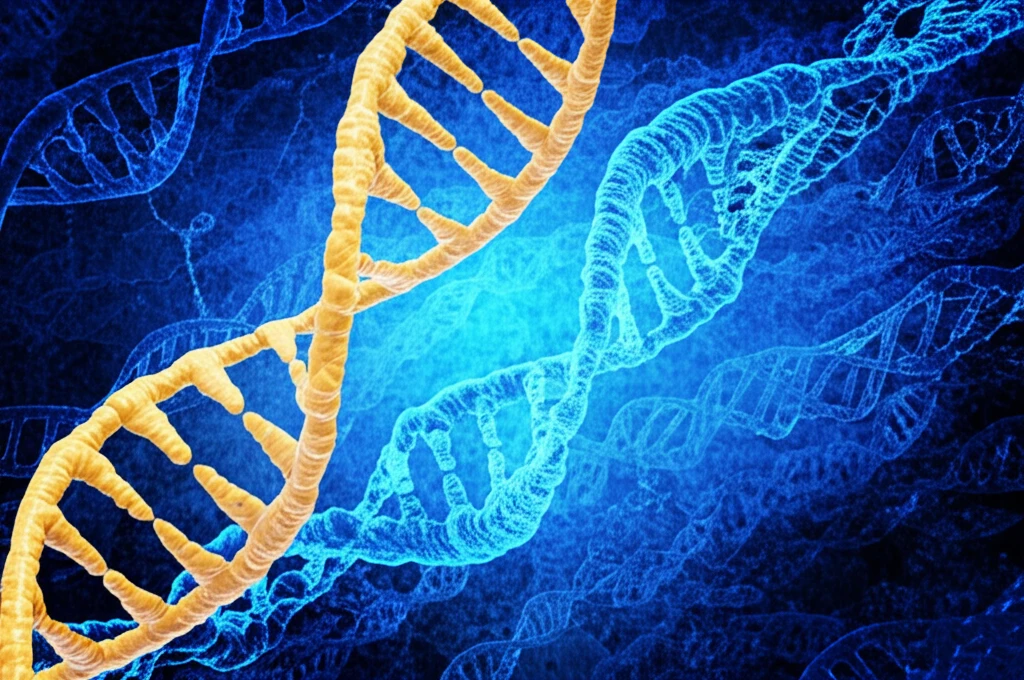
Unlock the Secrets to Healthier Pork: How Gene Analysis Could Revolutionize Meat Quality
"Discover how mRNA and lncRNA research in pigs is paving the way for better understanding of intramuscular fat and lipid metabolism, with implications for human health."
For centuries, humans have selectively bred animals to enhance desirable traits. In pig farming, this has led to leaner meats, but often at the expense of flavor and marbling, which are heavily influenced by intramuscular fat (IMF). Simultaneously, growing rates of obesity are pushing researchers to discover the science behind lipid accumulation. Pig models are especially useful, as they are anatomically similar to humans. Understanding the precise pathways of fat deposition in swine is key to solving human health problems and improving meat quality.
Recent scientific advancements have revealed that genes might regulate intramuscular adipogenesis and lipid metabolism. These include genes like stearoyl-CoA desaturase (SCD), fatty acid synthase (FASN), and peroxisome proliferator-activated receptor gamma (PPARY).
Delving into this topic further, recent developments in RNA sequencing (RNA-seq) have allowed scientists to identify and analyze long non-coding RNAs (lncRNAs) and mRNAs. LncRNAs, which do not code for proteins, play critical regulatory roles in fat deposition. However, research on lncRNAs in pig intramuscular adipose tissue is still limited. A new study aims to address this gap, focusing on pigs with stark differences in fat deposition.
Decoding the Genome: Key Findings on Fat Deposition in Pigs

A new study published in Cellular Physiology and Biochemistry investigates the function of mRNAs and IncRNAs in intramuscular fat development of two pig breeds. The research team used Laiwu (LW) pigs and Large White (LY) pigs. LW pigs, native to North China, are known for high-quality meat with significant intramuscular fat. Large White pigs are a faster-growing, leaner breed.
- Key LncRNAs Identified: Through co-expression network construction and target gene analysis, 31 key LncRNAs were identified as potentially important in regulating fat deposition.
- Gene Ontology and KEGG Pathway Analysis: Analysis revealed that the differentially expressed genes and IncRNAs were primarily involved in biological processes and pathways related to adipogenesis and lipid metabolism.
- Specific Targets: The study suggests that XLOC_046142, XLOC_004398, and XLOC_015408 may target MAPKAPK2, NR1D2, and AKR1C4, respectively, playing critical regulatory roles in intramuscular adipogenesis and lipid accumulation in pigs.
- Role in Lipid Metabolism-Related Diseases: XLOC_064871 and XLOC_011001 may influence lipid metabolism-related diseases by regulating TRIB3 and BRCA1.
Implications for Health and Future Research
This research offers important implications for both agriculture and human health. Understanding the genetic mechanisms that control intramuscular fat deposition in pigs could lead to strategies for improving meat quality. It also helps advance our knowledge of obesity and related metabolic disorders. Further studies are needed to validate these findings and explore the potential of targeting IncRNAs to manipulate fat metabolism. Ultimately, this could lead to new interventions for preventing and treating obesity and related health problems.
